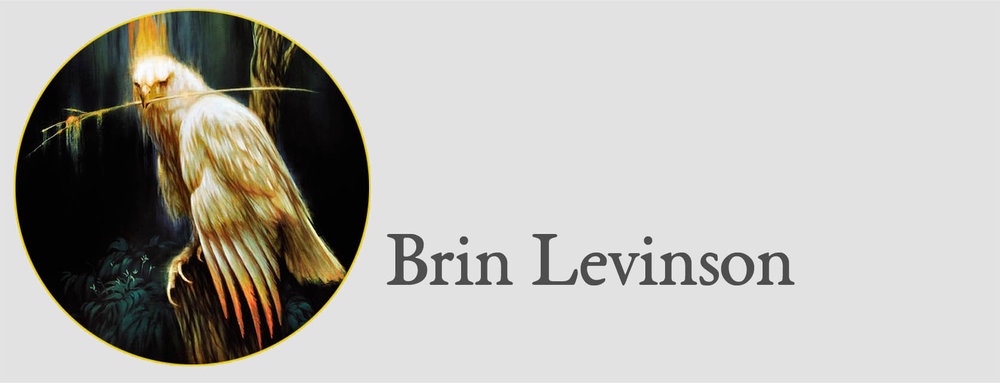Brin Levinson, originally from Vermont, has lived and worked in Portland, Oregon since 2001. He studied animation, a foundation that continues to influence his sense of movement and atmosphere in still imagery. Inspired by his travels and the layered beauty of natural and urban landscapes, Levinson’s work often explores the intersection between the built environment and the wilderness that surrounds it. His paintings invite viewers into dreamlike spaces where architecture and nature coexist, reflect, or collide. Through evocative contrasts and surreal compositions, Levinson captures the wonder of discovery, the pull of memory, and the shifting relationship between people and place.
"At the heart of it, my imagery tells a story of nature reclaiming the world that humans have created. Sometimes animals simply observe this unnatural world. There is a common thread in these paintings of light bursting out of darkness. I always attempt to balance my imagery with a hopeful and inspiring tone. The light and dark contrast represents a deeper version of that. Not only do my paintings depict the victory of nature but also the curiousness of life."
-From writer Simona Albani:
The air is rarefied in a suspended atmosphere; on the background made of bridges, ghost cities and industrial archeology ruins, animals wander; they are the survivors of an undefined world.
They seem not to recognize their land; they are alone, no men with them but only what men built and left.
There is a deep sense of nostalgia in their lost gazes, in their way to cruise along rivers and meadows; here the faded blue of the water and the dark brown dominate in an obsessive manner.
Levinson’s paintings are postcards of a place where time stopped, snapshots of intense drama where nature bumps into the dream of a failed progress.
Factories have been abandoned , trains still on interrupted rails, human beings disappeared, maybe run away somewhere else.
But this time has neither an end nor a beginning yet; it could be only a dream, the artist’s dream, who wants to recover through a new evaluation of the reality; a conscious vision of both blame and hope. -SA
American Art Collector magazine on Reclamation of Nowhere... Brin Levinson and Josh Keyes at Antler Gallery.
-From Tin House Magazine:
Levinson’s worlds—washed in dour grays, ochre, and sepia brown—suggest the landscape before us is already becoming a relic. The brightest colors, the occasional burst of blue sky that breaks out from behind cloud-crowded sky, the flash of red graffiti on a rhino, pop off the canvas. You can see the influence that Portland’s industrial areas and older architecture have had on Levinson, particularly the city’s multiple bridges—Hawthorne, the Steel Bridge, St. Johns—near which the deer and the zebra roam, while wildebeests graze in the city’s Chinatown, and beneath an underpass in a switching yard, a tagged walrus, big as a train car, appears to rest his weary flippers. With the skyline of the deserted city in the distance, an abandoned ship lists in a nearly dry riverbed, a pair of elephants posing like refugees from Noah’s Ark. There is something comic in this, as in the image of a giant white rabbit apparently about to topple a water tower. Outside of the city, dirigibles as big as whales glide past a pretty blue Victorian house, while in the foreground a gold bird, beak wide open, is either belting out a song or a warning. -Elissa Schappell
- Interviews: Platinum Cheese Antler Gallery Empty Kingdom Hi Fructose Beautiful Bizarre


